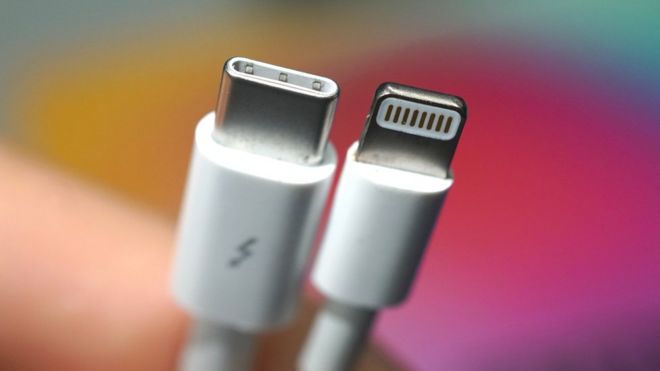By the end of 2024, all mobile phones, tablets and cameras sold in the EU will have to be equipped with a USB Type-C charging port. From spring 2026, the obligation will extend to laptops. What does that mean for Canadians? We discuss all this and more on the VOCM morning show……….
1. Can you give us some further details on this new European Union regulation?
So, like you mentioned the European Parliament recently voted in favour of mandating USB-C charging ports for all handheld electronic devices by as soon as 2024. Laptops will have an extra two years, until 2026, to adopt this new charging port technology. This law is believed to be the first in the world designed to standardize charging ports for all handheld things like laptops, cameras, mobile phones and other gadgets.
One of their main reasons behind pushing this law is to drive greater re-use of chargers reducing the environmental impact of consumer electronics purchases. Currently, on the e-waste front, disposed of and unused chargers annually account for about 11,000 tonnes of e-waste. And that’s just in the UK.
Another reason behind this law is to ensure that all devices with USB-C will support the same ‘FAST CHARGING’ speeds regardless of the device you are charging. At the moment, fast charging is fast for some devices but not for others making it confusion for many people.
Finally, the directive requires device makers to apply dedicated labels that inform consumers about the charging characteristics of new devices, with the aim of making it easier for EVERYONE to see whether their existing chargers are compatible or not. The idea for the label requirement is so consumers can make an informed choice about whether or not to purchase a new charger with a new product or be able to use the existing charger they already have. It is estimated that this new law will help UK buyers save up to 250 million a year on unnecessary charger purchases.
And so, even though this law is for the European Union, it is assumed that most other countries will tend to adopted this standard too.
2. How will this new law affect tech giants like Apple, Google, Microsoft, and Samsung?
Currently, most manufacturers use a version of this USB standard so it doesn’t seem to dramatically affect many of the top manufactures directly – other than Apple – who does not use use USB-C on all their phones, wireless headphones, mice, and keyboards, choosing to use its proprietary slower and outdated lightning port. It is estimated that one in five phones in Europe use Apple’s older proprietary lightning port.
3. What does the lack of support for USB-C in the Apple ecosystem say about the company?
So Apple is known for thinking different and building a guarded wall around its ecosystem of technology. Many people who buy into Apple’s family, know going in that they will have to subscribe to what Apple thinks is right for their tech. Ten years ago when the lightening port was first introduced it was touted as a game changer and five years ago when they removed the headphone jack from most of their mobile devices it proved to be the gold standard into wireless bluetooth headphones.
Even though they have not commented yet on this ruling, Apple has said in the past that being forced to follow an industry standard technology could stifle innovation. Keeping in mind that any company who decides to sell the outdated Apple certified lightning cables has to pay a surcharge back to Apple. So this ruling would mean less money for Apple.
With that in mind, there have been rumours that Apple has been working on switching their iPhone product line to USB-C anyway. At the moment, all of their new iPad and laptop line is USB-C so it’s mainly just their iPhones.
4. What will this law mean for us consumers?
It’s a definite win for consumers. It would mean that one charger could rule them all. People could then use one or the same type of charger for all of their devices. Fast charging could then be the same for all devices regardless if its an iPhone or an Android device. The EU estimates that standardizing charing ports could cut down on 300 million dollars of e-waste brought about by obsolete hardware.
With that in mind though, outlawing old chargers might initially have a disproportionate impact on consumers and the environment since only 29% of mobile phones sold in the UK in 2018 had the new USB-C connectors. I’m sure the stats are similar in North America as well. So you might see more e-waste initially but in the long run this universal connection should reduce waste and save consumers confusion and money.
5. What’s the bottom line here?
You know, technology changes at a very fast rate and what was king today might be carnival tomorrow. Wireless charging technology is currently found across many mobile phones manufactures, though not as fast or reliable as the wired USB-C. Knowing what I know about Apple, I’d put my money on the fact that Apple is looking to implement wireless over wired and if push comes to shove you could see them ditch USB-C for a preparatory Apple wireless technology instead in the near future.


Leave a Reply